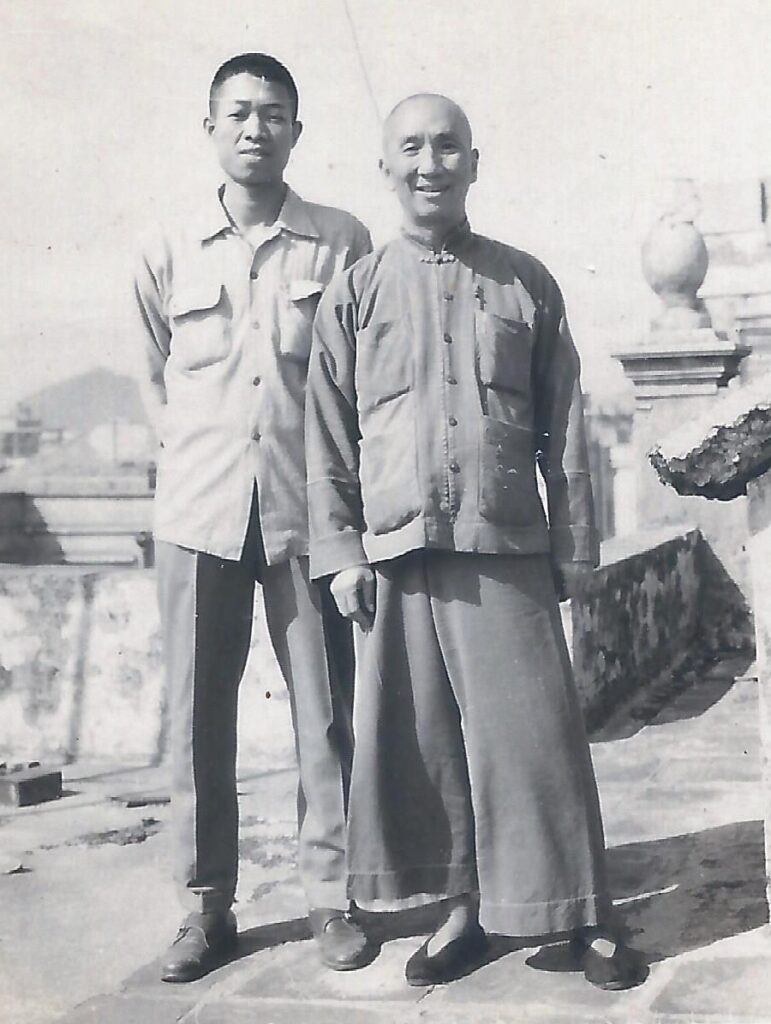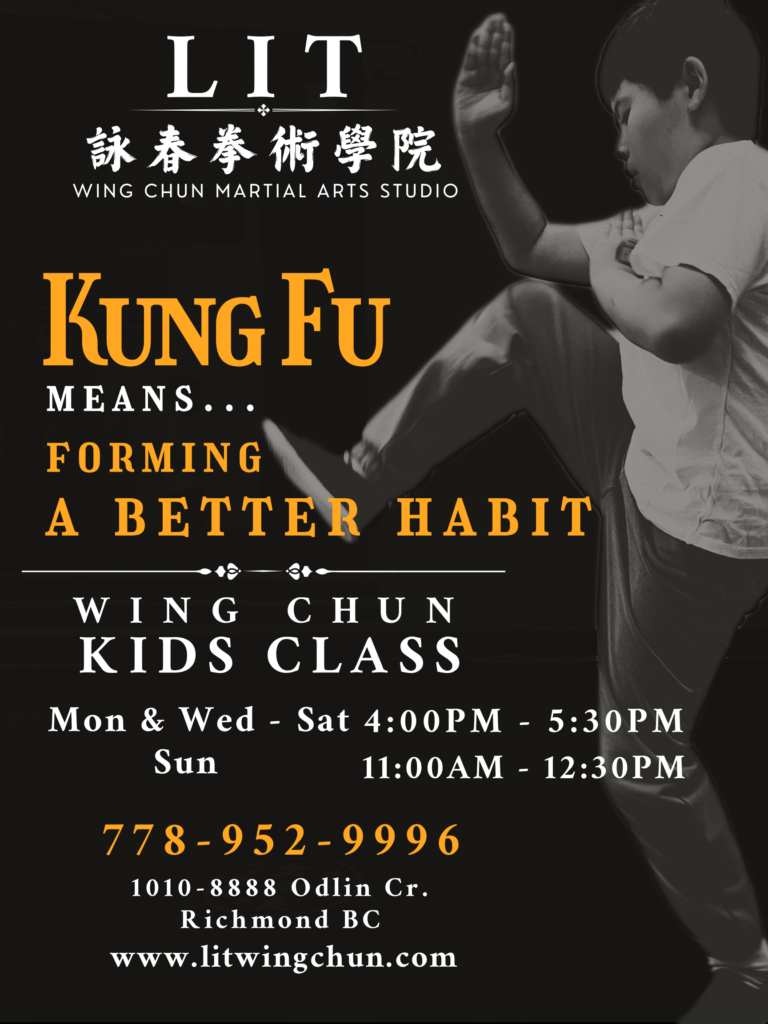“The way of Wing Chun is broad and deep,
Persistent practice and study shapes one’s moral character,
Once techniques reach the true and utmost pinnacle,
Power roars like river and sea, day and night”
– Grandmaster Chu Shong Tin

Wing Chun, or Ving Tsun, is a southern Chinese martial art that is characterised by its centre line defence principle and energy conserving mechanisms to generate maximum power in close-range combat .
The history of Wing Chun originates in China during the Qing-dynasty by a Buddhist nun named Ng Mui. According to oral tradition, Ng Mui developed the martial arts system in her later years as a way of using minimal force to overcome a larger and stronger opponent. She would later name the art form after her one and only student, Yim Wing Chun. Over several generations, Wing Chun was passed down to grandmaster Ip Man (1893-1972) who began teaching publicly in Hong Kong, and whose students have since popularised the art in Hong Kong and across the globe.

年輕的徐尚田師傅(左)與葉問宗師(右)
Our Wing Chun school was established by Sifu Leo Lit Leung Yiu. Sifu Lit is a student of Grandmaster Chu Shong Tin (1933-2014), who was a senior student of Ip Man, and is widely considered to have been one of the greatest modern practitioners and teachers of Wing Chun.

列良耀師傅(左)與徐尚田宗師(右)
The Syllabus
Wing Chun training includes three empty hand forms:
- Siu Nim Tau (The Little Idea)
- Chum Kiu (Seeking Bridges)
- Biu Gee (Darting Fingers)
Traditional training tools and weapons include:
- Mook Yan Jong (Wooden Dummy)
- Look Dim Boon Gwun (Six and a Half Point Pole)
- Baat Jam Do (Eight Chopping Knives).
Chi Sau (Sticky Hands) is a partnered training exercise where two practitioners practice and apply Wing Chun principles and techniques.
The Empty Hand Forms
Siu Nim Tau, or “The Little Idea” is Wing Chun’s first empty hand form. Its simple movements are designed to capture the fundamental principles of structure and intent-driven power generation.

Chum Kiu, or “Seeking Bridges” is the second empty hand form. It refers to the concept of “bridging” the contact point between the opponent and one’s strikes. It introduces rotational force to the structural integrity of Siu Nim Tau, creating two simultaneous planes of force to improve combative ability.

Biu Gee, or “Darting Fingers” is Wing Chun’s final empty hand form. This form requires a strong foundation in the fundamentals of the Siu Nim Tao and Chum Kiu in order to evoke a rapid whirlpool effect. By practising with full speed and intent, practitioners can concentrate great destructive force into their attacking extremities.
Partner Training
Chi sau, or “Sticky Hands”, is the main partner exercise in Wing Chun through which movements and fundamental principles from the three empty hand forms are honed. Sticky Hands covers a range of objectives and intensities through which fundamental Wing Chun skills and techniques can be practised with an increasingly noncompliant partner.

Traditional Weapons and Training Tools
Mook Yan Jong, or “Wooden Dummy”, is a training tool that allows a practitioner to train the characteristic techniques and principles of Wing Chun.

Look Dim Boon Gwun, or “Six and a Half Point Pole”, and Baat Jam Do, or “Eight Slash Knives”, are the two traditional weapons of Wing Chun. Weapons training includes tactics for long and short weapons, extending Wing Chun skills and techniques beyond empty hands into weapons.
Are you still curious? Come and train with us to find out more!
詠春武術
詠春是源自中國南方的武術,著重於短距離搏擊,利用中線理論及放鬆身體而產生龐大力量去擊敗對方。
詠春拳術的開山祖師是清朝時代一位少林尼姑名為五枚大師。據說因她晚年體力日漸衰退,五枚祖師集她畢生武學去創立一門以柔力制剛的拳術,及後師傳她的唯一徒弟嚴詠春, 為詠春門派種下第一夥種子。其後一脈相傳至由葉問宗師(1893-1972)並在香港首次公開授拳,為詠春門派開枝散葉 ,在香港和國際間推廣本門武術。
詠春拳術學院是由列良耀師傅創立。列師傅是徐尚田宗師(1933-2013)門下的徒弟。徐尚田師傅也是葉問宗師的資深弟子,亦被廣泛認為是詠春門派最正宗的現代修練者和導師之一。


詠春大綱
詠春拳術的教學大綱集三路拳法 (小念頭,尋橋,標指),木人樁法,棍法(六點半棍)及刀法(八斬刀)組合而成。 以上拳法是一般單式必需的練習,而對手互相練習也會使用盤手,黐手方式去實踐搏鬥的基本法則及提升習拳者的敏捷靈活身手。
詠春拳法
小念頭是詠春的入門拳法。這套拳法包含了詠春武術的招式結構根基及使用意念推動內力的基本法則。
尋橋是詠春的進階拳法。 顧名思義,尋橋是要尋找與對方橋手的接觸方法。 這拳套融入小念頭的基本招式原則再配合尋橋的馬步轉動及進攻技巧來使出不同方向的攻擊力量,令習拳者的搏擊力量大大提升。
標指是詠春拳術的終極拳法,是凝聚小念頭的意念力量和尋橋的重量轉動技巧,在標指招式上發揮快速旋轉的殺傷力。習拳者若要掌握標指拳法的運用技巧必需在小念頭和尋橋的練習上打好基礎。
View this post on Instagram
黐手
黐手是詠春獨有的練習方法,訓練習拳者在受着敵人壓迫時如何使用詠春基本拳法去應對攻擊。因此黐手練習便是磨練詠春招式結構的精要元素。
詠春傳統訓練工具及兵器
詠春的木人樁是給習拳者一個模擬對象去使用詠春三路拳套的招式結構及用力方法。
除了拳法,樁法,詠春拳術也包括六點半棍及八斬刀兩類兵器。在詠春拳術的角度,兵器是延伸身體攻擊能力的部份。六點半棍法是使用長橋兵器的練習,而八斬刀是使用短橋兵器的練習。


